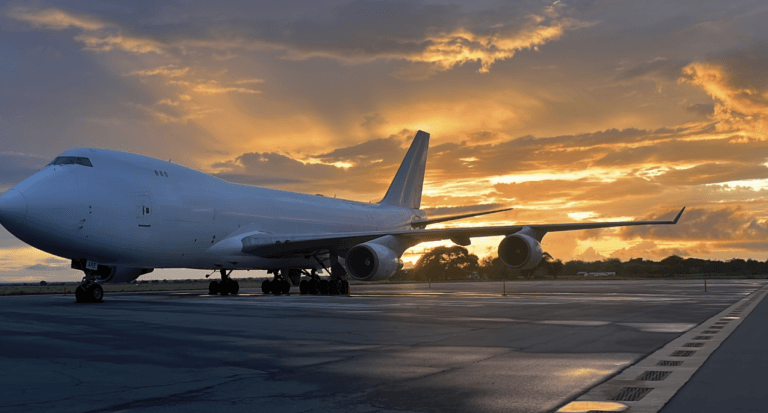Over the past decade, the African airfreight market has witnessed significant growth driven by several key factors for both import and export. The increasing demand for high-value, time-sensitive goods, such as electronics, pharmaceuticals, flowers and other perishables, has spurred the need for faster and more reliable transportation.
The rising middle class and urbanisation have also contributed to higher consumption, particularly for time-sensitive and high-value goods. Additionally, the growing demand for e-commerce, the expansion of industries like agriculture and pharmaceuticals, and the strengthening of regional trade agreements such as the African Continental Free Trade Area (AfCFTA) have all created new opportunities for airfreight services.
“Africa’s airfreight market has experienced significant growth, driven by a combination of increasing demand for high-value goods, rising intraAfrican trade, and the burgeoning e-commerce sector,” Jennifer van Wyk, Country Manager – South Africa, Chapman Freeborn, stated.
“Kenya has positioned itself as a key hub for cargo operations in East Africa. Nairobi’s Jomo Kenyatta International Airport (JKIA) has consistently served as a major gateway for both imports and exports, with Kenya being a crucial trade route for perishables like flowers, fresh produce, and pharmaceuticals. The country’s strategic location, alongside improvements in infrastructure and logistics networks, has helped Kenya maintain its status as one of the most significant airfreight hubs in Africa.”
“There has also been significant investment across the continent to modernise airport infrastructure, including cargo terminals, and to accommodate growing airfreight demand. As a result, major airports in countries like Ethiopia, Kenya, and South Africa have become key hubs for regional and international trade,” Beau Paine, Global Head of Cargo at Menzies Aviation, explained.
“These factors, combined with advancements in infrastructure and technology, are driving continued growth in the sector,” Harish Shah, CEO of M&C Aviation, added. Facilitating trade Airfreight is a cornerstone of Africa’s trade with the rest of the world, providing a fast and reliable way to move high-value, perishable, and time-sensitive goods.
It connects African businesses to global markets, boosts intra-Africa trade, supports humanitarian efforts, and attracts foreign investment, all of which contribute to economic growth and development on the continent.
“The speed and reliability of airfreight are crucial for supporting Africa’s growing e-commerce sector and meeting international supply chain demands. This connectivity fosters economic growth and strengthens Africa’s position in global trade,” Frederic Brun, Head of Commercial Cargo and Logistics at Liege Airport, stated.
The import and export of goods like electronics, medical supplies, cut flowers and fresh produce rely heavily on air cargo, and GSSAs ensure that the airlines we represent can serve these needs with the highest level of service. “Our local expertise and understanding of the African market help airlines better navigate the logistical challenges and customs processes, ensuring cargo moves quickly and efficiently,” Shah highlighted. As infrastructure improves and demand for global connectivity rises, airfreight will continue to play a vital role in facilitating African trade across borders.
The increasing volume of small, high-value shipments, the adoption of new technologies, the expansion of regional networks, and a focus on last-mile delivery have all become key components of the air cargo sector’s strategy to support e-commerce growth. “As Africa’s e-commerce market continues to expand, air cargo will remain a critical enabler of the region’s trade and logistics, offering opportunities for innovation and collaboration between e-commerce platforms, logistics providers, and air cargo carriers,” Paine expressed.
“Menzies is well placed with service offerings to support its customers and provide cross border transport solutions. 2025 sees continued focus on e-commerce for Menzies and its airline customers.” The key factors driving growth in Africa’s airfreight market include the rise of global and regional trade, advancements in digital technology, and the increasing need for time-sensitive deliveries, especially in sectors like e-commerce, pharmaceuticals, and perishables. “Industries such as agriculture (fresh produce and flowers), automotive (spare parts), and electronics continue to be significant drivers of demand. The growth of African tech startups and the expansion of e-commerce are also playing pivotal roles, as they require rapid and efficient logistics solutions to meet customer expectations,” van Wyk outlined.
Enhancing efficiency
Whilst demand is rising, barriers such as limited airport infrastructure, high operational costs, and insufficient connectivity between smaller markets continue to restrict further expansion. The development of this infrastructure is essential for improving the efficiency and scalability of airfreight operations in Africa. “Over the last decade, several African airports have made significant
investments in upgrading cargo facilities, expanding capacity, and improving digital systems to streamline operations,” van Wyk outlined. “Key airports in countries like Ethiopia, Kenya, and South Africa have improved cargo terminals and invested in cold chain infrastructure, facilitating the growth of high-value, temperature-sensitive commodities. However, continued improvements are necessary, particularly in the development of regional airports to ensure seamless connectivity and reduce bottlenecks.” “Optimising routes and working closely with regional players to improve connectivity can address infrastructure challenges,” Shah explained. Additionally, airfreight between African nations can be costly due to complex customs procedures and regulatory inefficiencies. The expertise of GSSAs in navigating these issues and streamlining the processes for our clients is crucial in driving the growth of intra-African airfreight trade.”
“Africa’s limited airport and logistics infrastructure sometimes hampers the efficiency of air cargo operations, causing delays and higher costs. Partners like Liege Airport mitigate these challenges by serving as a reliable hub, efficiently connecting African airfreight to global supply chains,” Brun added.
Outside investment in the region by handlers and others in the airfreight industry at African airports has been key in accommodating growing demand. For example, at airports like Nairobi and Johannesburg Menzies Aviation has invested in state-of-the-art cargo terminals, and improved facilities that can handle increased traffic. “Modern cargo terminals with better handling, storage, and processing systems allow for quicker turnaround times and more efficient cargo management.
These terminals are designed to handle a wide variety of goods, including perishables, pharmaceuticals, and high-value products, which require specific handling procedures,” Paine added.
Intra-Africa trade The liberalisation of Africa’s air cargo market has seen significant strides in recent years, particularly with initiatives like the Single African Air Transport Market (SAATM). SAATM is essentially the African Union’s push for an open skies policy across the continent. It encourages member states to remove restrictions on air services, such as capacity limits, route restrictions, and pricing controls.
This policy aims to create a more competitive environment that benefits cargo operators by allowing them to offer more frequent and direct flights between African countries and has been positive in helping airlines expand their reach and reduce regulatory barriers across the continent.
“Progress toward liberalising the African air cargo market includes improved regional connectivity and reduced trade barriers under initiatives like SAATM,” Hubs like Liege Airport support this progress by strengthening international links,” Brun expressed.
“By eliminating restrictions on air traffic and opening up more routes, SAATM enables greater competition and better connectivity for air cargo services. M&C actively works with airlines to ensure they can take full advantage of these regulatory changes, positioning our partners for success in a more open and liberalised market,” Shah declared.
“As a result of the SAATM, we have seen a gradual elimination of restrictive bilateral air service agreements between countries. These agreements historically limited the number of carriers that could operate between two countries and often led to higher costs and inefficiencies in air cargo transportation. SAATM seeks to replace these with more open agreements, encouraging a freer flow of goods,” Paine affirmed. Beyond SAATM, several initiatives are underway to improve intraAfrican air cargo connectivity. The African Union and the African Airlines Association (AFRAA) have been working to remove barriers to intra-African air cargo movement by advocating for open skies agreements and reducing regulations that impede the free flow of goods. Additionally, regional airlines are increasingly forming partnerships and codeshare agreements to enhance their networks, while infrastructure improvements are making it easier for cargo to move within the continent.
“These efforts are crucial for enhancing regional trade and supporting the African Continental Free Trade Area (AfCFTA) by reducing transit times and costs for intra-regional shipments,” van Wyk added. Regional developments Regions like East Africa (Kenya and Ethiopia) and West Africa (Nigeria and Ghana) are emerging as air cargo hubs due to strategic locations, growing exports, and investments in airport infrastructure.
In particular, Johannesburg, Nairobi, and Addis Ababa have become pivotal hubs due to their strong connectivity to both regional and international markets. Partnerships between airlines, freight forwarders, and local operators are essential to ensuring the growth and efficiency of airfreight services in Africa amid this development. By collaborating, these stakeholders can optimise routes, share infrastructure, and reduce costs through economies of scale. For instance, many airlines and freight forwarders are joining forces to offer more robust networks, allowing for more flexibility in cargo movement and minimising delays.
Additionally, local operators often have in-depth knowledge of regional markets and regulations, which makes them valuable partners in expanding air cargo reach. “Collaborative efforts contribute to a more seamless, cost-effective, and scaleable air cargo network across the continent,” van Wyk explained.
“GSSAs support airlines in these markets by ensuring they can meet the growing demand for air cargo services through optimised sales and operations management. These hubs are becoming more attractive to global carriers, and M&C is proud to be part of the network that facilitates this growth,” Shah said.
“Interline agreements and ongoing collaboration with freight forwarders and airlines are essential drivers of growth in Africa’s air cargo market. By enabling broader connectivity, reducing costs, increasing service reliability and fostering global trade links, these partnerships are helping to overcome the continent’s logistical challenges,” Pain continued.
“The key word in our industry and these times is partnerships, never forget that air cargo and logistics is based on human relationships,” Brun concluded.





